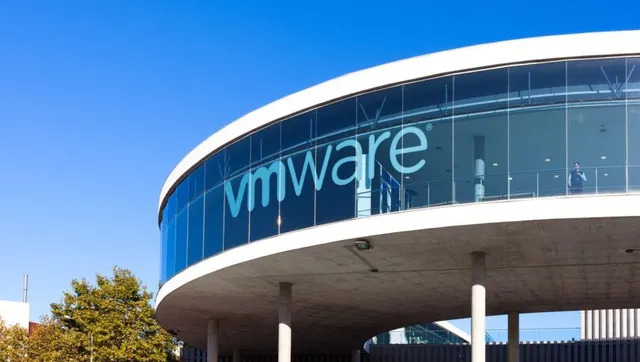Navigating VMware Licensing & Price Changes

Options for Your Infrastructure
In the wake of VMware’s acquisition by Broadcom, many organizations are grappling with significant changes in licensing and pricing. Price changes are expected to continue (increase) throughout 2025. These shifts have led IT leaders to critically evaluate VMware’s role in their infrastructure and explore alternative strategies to ensure both performance and cost-efficiency. If you’re among those reconsidering your VMware licensing agreements, this article will walk you through the options available and help you make informed decisions for the future of your IT environment.
The Impact of VMware’s Licensing Changes
Exploring Alternatives to VMware
If you’re considering a shift away from VMware, there are several viable paths to explore. Each alternative offers unique benefits depending on your organization's specific needs, workloads, and strategic priorities. Cloud 9 can help you compare providers and identify the best fit for your requirements.
- Hybrid Cloud Solutions There's a notable trend towards hybrid cloud solutions, with organizations looking to balance their on-premises environments with public cloud services in response to rising VMware costs and the need for flexibility. Combining on-premise, private-cloud, and public or hyper-cloud environments, hybrid cloud strategies enable businesses to reduce their dependency on VMware while taking advantage of cloud scalability and cost-efficiency. Vendors like Expedient, Flexential, TierPoint, and Otava offer infrastructure-as-a-service models that integrate with existing environments.Key benefits:
Flexibility in workload placement
OpEx-based pricing
Enhanced disaster recovery and backup options
- Embracing Containerization
Containerization offers a modern alternative to traditional virtualization, enabling you to package applications and their dependencies into lightweight, portable containers. Platforms like Kubernetes (or OpenShift) make it easier to orchestrate and manage these containers, allowing businesses to reduce reliance on traditional hypervisors.
Key benefits:
Increased agility and scalability
Reduced infrastructure overhead
Ideal for modern DevOps workflows
Cloud 9’s neutral engineering resources can help you explore containerization and service provider options among other emerging technologies to transform your IT strategy.
Nutanix
Nutanix is a leading player in the hyper-converged infrastructure (HCI) market. Its software-defined approach simplifies IT operations by integrating compute, storage, and networking into a single platform. Nutanix offers robust virtualization capabilities with its built-in hypervisor, AHV, which eliminates the need for VMware licensing altogether.
Key benefits:
Reduced licensing costs
Simplified management
Built-in support for hybrid and multi-cloud environments
- Microsoft Azure
For organizations looking to embrace the public cloud (or hyper cloud as we like say), Microsoft Azure provides a compelling alternative. Azure’s vast array of services, combined with its seamless integration with Windows Server and Hyper-V, makes it an attractive option for businesses transitioning from VMware.
Key benefits:
Pay-as-you-go pricing model
Scalability to match changing workloads
Integration with existing Microsoft tools and ecosystems
- Google Cloud Platform (GCP)
Google Cloud is another strong contender, particularly for organizations that prioritize advanced analytics, machine learning, and containerization. GCP’s focus on Kubernetes and open-source technologies provides a forward-looking approach to modern IT environments.
Key benefits:
Cost-effective cloud infrastructure
Strong emphasis on Kubernetes and containerized workloads
Integration with Google’s AI and ML tools
- Amazon Web Services (AWS)
AWS is the largest public cloud provider, offering a comprehensive suite of services for compute, storage, networking, and beyond. Many organizations migrating from VMware to AWS leverage VMware Cloud on AWS as a stepping stone, allowing them to retain familiarity while transitioning to a cloud-native architecture.
Key benefits:
Extensive service offerings
Global infrastructure
Smooth transition options for VMware customers
- Proxmox VE
While not for everyone, some organizations may appreciate Proxmox VE. It is an open-source virtualization platform that combines support for both virtual machines and containers. It offers a cost-effective alternative to VMware, especially for organizations seeking to avoid licensing fees. However, Proxmox may present some risks for enterprise use or larger deployments due to it being open-source, reliance on community support, and potentially limited enterprise-grade features.
Key benefits:
Free or low-cost licensing
Integrated web interface for ease of management
Support for both virtual machines and containers
While Proxmox is well-suited for small-to-medium businesses or non-critical workloads, organizations with more demanding enterprise needs should carefully evaluate its capabilities and potential limitations.
Building a Strategic Transition Plan
Switching away from VMware is not a decision to be taken lightly. A successful transition requires careful planning and execution to minimize disruption and maximize ROI. Here are some steps to consider:
Assess Your Current Environment: Identify which workloads and applications rely on VMware and evaluate their compatibility with alternative platforms.
Evaluate Costs: Compare the licensing, support, and operational costs of VMware versus potential alternatives.
Consider Long-Term Goals: Align your IT strategy with broader business objectives, such as adopting hybrid cloud, enhancing disaster recovery, or modernizing applications.
Engage Stakeholders: Involve key decision-makers and IT teams early in the evaluation process to ensure alignment and buy-in.
Pilot and Test: Conduct proof-of-concept tests with alternative platforms to identify potential challenges and validate performance.
Cloud 9 and our team of experienced, vendor-neutral engineers is uniquely positioned to support your organization throughout this journey, ensuring you find the most effective and efficient solutions for your infrastructure needs.

